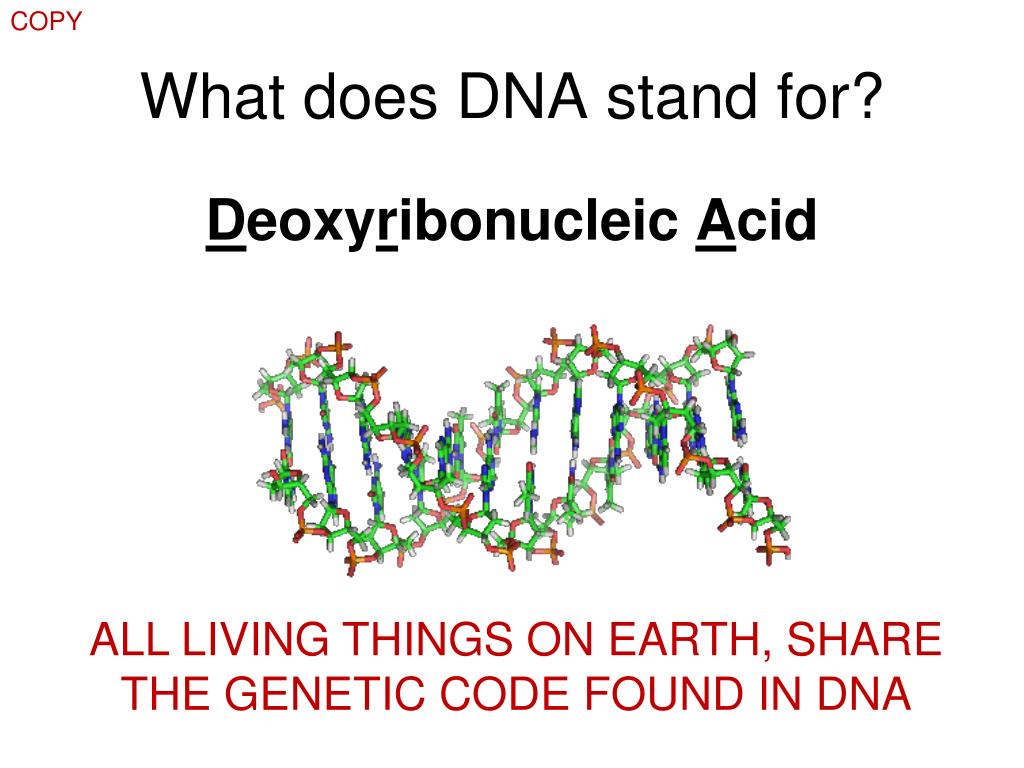
Most of the genome is the same between all humans– scientists estimate that any two people’s genomes are around 99.9% identical. Together, all 3 billion bases of DNA are called the genome.
#Dna stands for... full
The full length of the DNA sequence in every cell is around 3 billion bases. Differences in DNA leads to differences in traits and disease propensity Every cell contains the same sequence of DNA, so every cell contains the full set of instructions for making a person.
#Dna stands for... how to
A person’s DNA contains the blueprints telling a cell how to make sub-cellular structures and the molecules the cell needs to live and function. The sequence of these bases is what encodes all the information held by the DNA molecule. The cells that make up the human body each have a set of DNA, the molecule that contains the information necessary for making an entire person. DNA carries instructions for traits and disease DNA is made up of a string of four types of “building blocks,” called bases. (2021).DNA is short for deoxyribonucleic acid, the molecule that contains the information necessary for making an entire person.
#Dna stands for... code
Certain mutations in a person’s genetic code can lead them to develop a variety of diseases or conditions.Īlternatively, a person can inherit a gene that may cause problems with their health. Sometimes, however, a person’s DNA sequence may change randomly. In all people, DNA degrades over time, causing people to age. Each time a cell divides and DNA is replicated, the telomere becomes shorter. Scientists liken them to the plastic tips on shoelaces that stop them from becoming frayed.Īs a person gets older, this protective region steadily becomes smaller.

They protect the ends of the chromosome from being damaged or fusing with other chromosomes.

Telomeres are regions of repeated nucleotides at the end of chromosomes. For instance, the codon GUG codes for the amino acid valine. Each codon codes for a specific amino acid or building block of a protein. MRNA provides information on a particular amino acid via three-letter sections called codons. Translation: The mRNA translates into amino acids by transfer RNA (tRNA).Another difference is that RNA does not contain the base thymine (T). RNA is a copy of DNA, but it is normally single-stranded. Transcription: The DNA code duplicates into messenger RNA (mRNA).Protein creationįor genes to create a protein, there are two main steps, including: For example, fruit flies have 8 chromosomes, while pigeons have 80 chromosomes. Humans have 23 pairs of chromosomes or 46 chromosomes in total. These chromosomes form the familiar “X” shape.Įach chromosome contains one DNA molecule.

In this coiled state, it is DNA is called chromatin.Ĭhromatin condenses further through a supercoiling process and packages into structures called chromosomes. Strands of DNA loop, coil, and wrap around proteins called histones. Most DNA lives in the nuclei of cells and some exist in mitochondria, which are the powerhouses of the cells.īecause humans have so much DNA and the nuclei are so small, DNA needs to be packaged incredibly neatly.


 0 kommentar(er)
0 kommentar(er)
